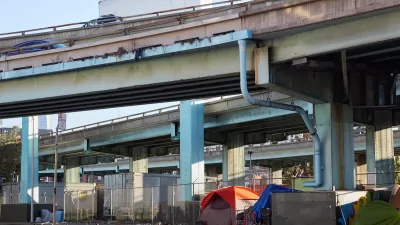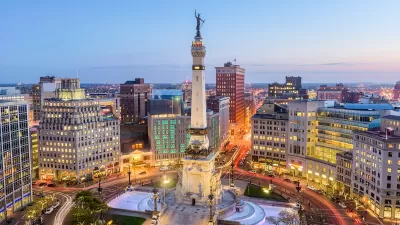Housing advocates say the additional resources made possible by federal relief funds offer a useful model for improving conditions for unhoused people.

“For a brief moment in time, funding materialized that cured long-intractable problems like reducing child poverty, funding unemployment at a dignified level and functionally ending homelessness in cities like St. Paul,” writes Bill Lindeke in MinnPost. But now, “The money has run out, and policymakers and shelter providers are facing the grim prospect of going back to the less humane way that our society treated people before COVID.”
Sarah Liegl, the director of the St. Paul’s Project Home, praises the benefits of single-room occupancy (SRO) housing that became possible during the pandemic. “The influx of money taught us there’s a much better way. It’s amazing. Families can come in and have their own room and lock their door, and we’ve seen a huge increase in the number of families finding housing.”
As federal funding dries up, the model looks less sustainable. “Without help, it leaves a bleak outlook for shelters focused on individuals, like the former Bethesda Hospital site in the Capitol Heights neighborhood,” Lindeke writes.
Advocates are hopeful that the success of pandemic-era programs will convince state legislators to allocate more funding to programs that support SRO shelters. “It might be the first sign of possible change in a field that’s long been seen as an almost Sisyphean struggle against an inevitably victorious foe.” As Lindeke points out, “The U.S. government just proved that it can fix long-standing social ills, and the hope is that a large state surplus can keep the county’s unsheltered families in their stable homes.”
FULL STORY: ‘There’s a much better way’: How pandemic relief offered a roadmap for addressing homelessness

Alabama: Trump Terminates Settlements for Black Communities Harmed By Raw Sewage
Trump deemed the landmark civil rights agreement “illegal DEI and environmental justice policy.”

Planetizen Federal Action Tracker
A weekly monitor of how Trump’s orders and actions are impacting planners and planning in America.

The 120 Year Old Tiny Home Villages That Sheltered San Francisco’s Earthquake Refugees
More than a century ago, San Francisco mobilized to house thousands of residents displaced by the 1906 earthquake. Could their strategy offer a model for the present?

Ken Jennings Launches Transit Web Series
The Jeopardy champ wants you to ride public transit.

BLM To Rescind Public Lands Rule
The change will downgrade conservation, once again putting federal land at risk for mining and other extractive uses.

Indy Neighborhood Group Builds Temporary Multi-Use Path
Community members, aided in part by funding from the city, repurposed a vehicle lane to create a protected bike and pedestrian path for the summer season.
Urban Design for Planners 1: Software Tools
This six-course series explores essential urban design concepts using open source software and equips planners with the tools they need to participate fully in the urban design process.
Planning for Universal Design
Learn the tools for implementing Universal Design in planning regulations.
Clanton & Associates, Inc.
Jessamine County Fiscal Court
Institute for Housing and Urban Development Studies (IHS)
City of Grandview
Harvard GSD Executive Education
Toledo-Lucas County Plan Commissions
Salt Lake City
NYU Wagner Graduate School of Public Service





























